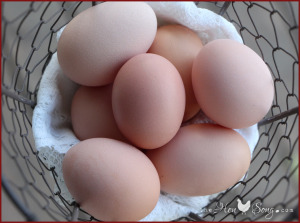I’ve always wanted to try making a cinnamon bread, and here it is! I must say, it turned out rather well. It’s not too sweet and easy to make. You could easily use honey in place of the first sugar. And use whatever flour you’d like. I actually baked mine on a cookie sheet, but I would recommend putting it in a loaf pan so it doesn’t flatten out so much. I tend to “wing it” with recipes, but a number of folks wanted the recipe, so here it is:
Cinnamon Swirl Bread — Yields one loaf
2 c organic spelt flour
1/2-1 c organic unbleached white flour
1T yeast
1/2 c organic milk
1/3-1/2 c water
1/8 c brown sugar
2T organic butter (plus 1T)
1T salt
1 farm fresh egg, beaten
1T cinnamon
1/2 c brown sugar
Stir together 1 cup of spelt flour and yeast.
Heat milk, water, and 1/8 cup brown sugar, 2 tablespoons butter and salt (though I forgot the salt and it didn’t seem to matter) over low heat until butter is melted.
Slowly add heated mixture to flour yeast mixture and mix well. Blend in the egg. Add the white flour (though you really can add whatever flour you’d like), a little at a time, until the dough chases the spoon around the bowl. Then, turn out dough on lightly floured surface and knead for at least five minutes, adding flour as needed. Form dough into ball and place in a greased bowl, cover with plastic wrap or tea towel, and let sit in a warm place for about 45 min to rise.
In a small bowl, mix together 1/2 cup brown sugar and cinnamon. Melt 1 tablespoon butter. Grease loaf pan well.
After dough rises, knead dough and roll out to about 1/2 inch thick rectangle. Brush with melted butter, then sprinkle the cinnamon sugar mixture on top. Beginning at the short end, roll the dough up very tightly to form a roll. Flatten ends a bit and roll them under the bottom. Place roll in greased loaf pan. (Try not to have too much cinnamon mixture exposed or it can ooze out the bottom while baking.)
Allow bread to rise for about 10-15 min. Preheat oven to 375 degrees F. Bake for 35 min. Remove from pan and allow to cool on wire rack. Enjoy!



